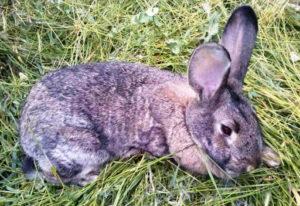Signs of ear mites in rabbits and home treatment
Psoroptosis, or psorioptic scabies, is an unpleasant skin disease in animals. Ear mites in domestic rabbits are caused by Psoroptes cuniculi. These external parasites most often settle inside the auricles of an animal, affecting the auditory canals. Outbreaks of psoroptosis can occur at any time of the year, but rabbits are most likely to get sick in late winter or spring. Animals of all ages are susceptible to infection, but females with offspring are especially vulnerable.
Ways of infestation with ear mites and its developmental phases
The disease is most often transmitted from a sick animal to a healthy one. Skin scales fall off the ears of sick individuals. They can get directly onto the fur of healthy rabbits. Very often, ticks fall on the litter, household items, and then move to the inhabitants of the cage. In some cases, the person himself carries the pathogen from animal to animal. A sick mother infects rabbits.
Risk factors are:
- crowded content;
- high humidity in the room;
- frequent regrouping of animals;
- non-compliance with quarantine norms;
- poor feeding.
The development of the tick begins after the fertilized female has laid eggs. To prevent them from rolling, she glues them with a special secret.
Further development of the rabbit ear mite includes the following phases:
- Larva. It emerges from the egg after 4 days. It feeds on secretions in the auricle of the animal for 5 days. After which the molt begins.
- Protonymph, or nymph of the first age. The stage lasts about 5 days.
- Daytonymph. At this stage, the genitals are formed. Duration - 5 days.
- Imago, or adult tick. At this stage, the fertilized females lay their eggs and the males continue fertilization.
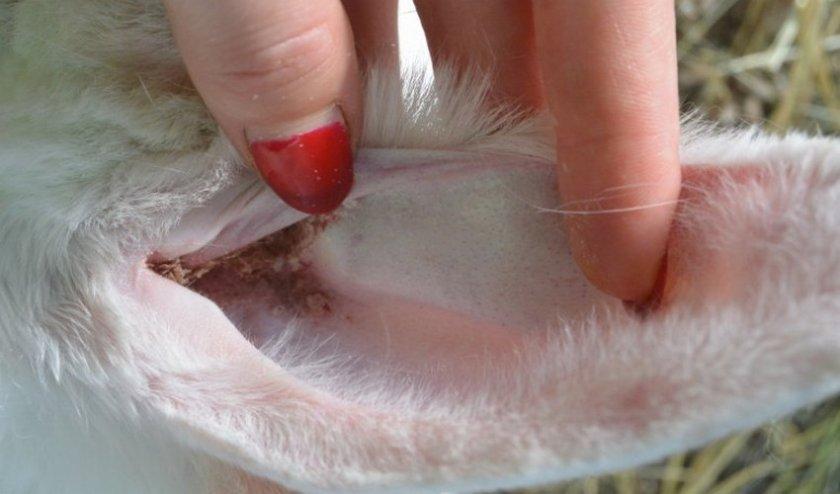
The lifespan of causative agents of ear scabies at a temperature of + 35 degrees and high humidity does not exceed 60 days.
Signs and symptoms of a parasite
The initial stage of the disease can proceed without visible symptoms. This period lasts from one and a half weeks to a month. The first signs can be identified with a regular examination of the ears of the animal. The appearance of visible separate foci of reddening of the skin, an increase in ear discharge is a cause for concern. The diagnosis can be confirmed by examinations of skin scrapings.
No complications
If the disease in the ears proceeds without complications, then you can guess about its appearance by the inner part of the ear. She always looks dirty and sticky.
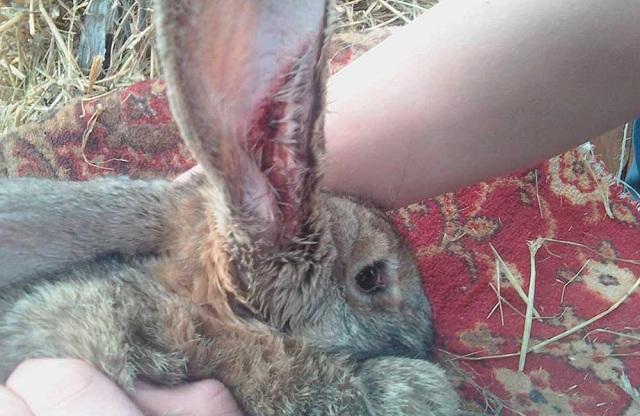
Under the bloom, individual reddened areas and nodules with fluid can be distinguished. If measures are not taken at this stage, the disease can be complicated by various unpleasant symptoms.
With complications
If ear scabies proceeds with complications, then the following symptoms appear:
- the animal is worried and almost without stopping scratches its ears, shakes its head, rubs it against the cage walls
- the ears inside and outside are covered with brown crusts, the affected areas are visible on the neck, back, paws;
- loses appetite, sometimes does not eat at all;
- there are discharge from the eyes and nose.
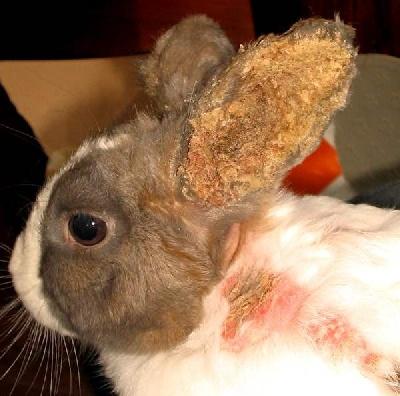
Very often there are such dangerous complications as leaving offspring by nursing rabbits and the development of tumors.
At an advanced stage, numerous pathogens can be detected on particles of the epidermis using a magnifying glass or microscope.
Treatment rules
Correct treatment begins with a diagnosis. To do this, all suspicious animals must be examined by a veterinarian. He will also take scrapings for laboratory research. If the diagnosis is confirmed, the specialist will select drugs for sick animals. Self-treatment can be started only if it is impossible to seek veterinary help.
Use of drugs
An ear mite can be effectively treated with drugs. A specialist or animal owner selects external remedies aimed at destroying the pathogens of scabies.

Effective against it:
- "Acaromectin" is a spray based on ivermectin. Causes paralysis and death of ticks. Quite popular with amateur rabbit breeders.
- Aversesectyl ointment - a product based on aversectin-s, an ointment was developed specifically for rabbits.
- "Neostomazan" is an effective drug against many types of ticks.
- "Butox" is produced in the form of a broad-spectrum concentrate. It is used for spraying animals after diluting 50 ml in a liter of water. Differs in high toxicity.
All drugs require compliance with instructions for use and safety rules.
Folk remedies and recipes
At home, in addition to pharmaceutical preparations, you can use folk remedies. If it is not possible to buy a ready-made drug against ear mites, then you can combine kerosene with vegetable oil in equal amounts and lubricate the affected areas with this composition every other day.
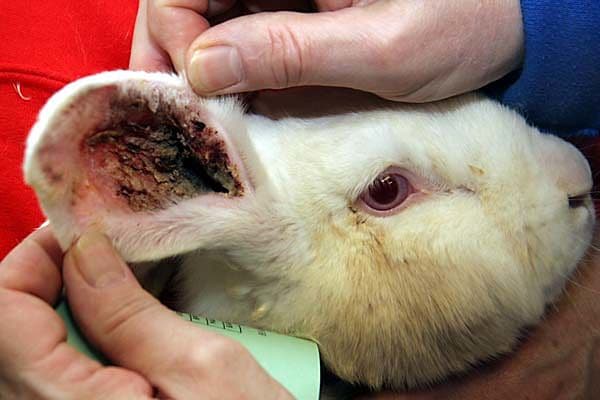
A mixture of an alcoholic solution of iodine with oil or glycerin has a similar effect. Helps instill camphor oil into the ears with a syringe without a needle.
Preventive measures
It is easier to prevent the disease than to spend money and energy on its treatment. The main preventive measures are to maintain good sanitary conditions on the farm. It is advisable to disinfect the cages and enclosures where animals are kept at least once a season in regions that are unfavorable for the disease. If there are no cases of diseases, then the frequency of treatments can be reduced to one every six months. The procedure is also carried out before the round. For these purposes, metal cells should be burned with a blowtorch.
Whitewash wooden structures with slaked lime with the addition of "Whiteness" or ammonia. Feeders, scrapers and other equipment are also washed with a bleach solution. Newly acquired animals must undergo mandatory quarantine. If a newcomer appears on the farm, for preventive purposes, he must be kept separately for 14 days.
